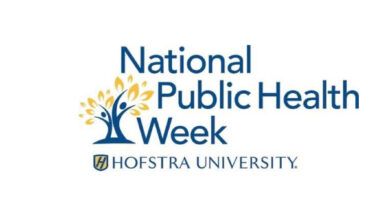NYC Health + Hospitals/OneCity Health today announced the launch of a population health and care management program designed to reduce hospitalizations among New York City children who suffer from frequent or severe asthma attacks. The home-based environmental management program assigns community health workers to visit homes to identify asthma triggers, reinforce strategies to help patients and their families maintain control over asthma, and supply free pillow cases, special cleaning supplies, and professional pest control services as needed.
OneCity Health—a subsidiary of NYC Health + Hospitals focused on population health, care management, and implementation of the State’s Delivery System Reform Incentive Payment (DSRIP) program—is aligning the public health system and its community partners, having already completed its first 500 home assessments, with plans to expand the program to hundreds more children and families this year.
“Asthma is the third-leading cause of hospitalization among children under the age of 15 in the United States, and oftentimes it’s because families may not understand how to reduce triggers or may struggle to address underlying determinants of health, such as substandard housing conditions,” said Dr. Luis Rodriguez, Chief of Pediatrics at NYC Health + Hospitals/Woodhull. “Controlling asthma requires getting to the root of the issue, including triggers in the home, and ensuring patients have access to the proper medications.”
“Through these transformation initiatives, which were enacted through the DSRIP program, we are connecting primary care physicians with community health workers and home remediation services, helping professionals across these organizations work together to care for patients with asthma,” said Andrew Kolbasovsky, Chief Program Officer, OneCity Health. “Our goal is to improve the quality of life for affected children, making sure they don’t miss school or avoid physical activity due to their asthma. That begins with creating a care plan focused on prevention, making sure patients don’t need to come to the emergency department or spend the night at the hospital because of asthma attacks.”
“Community partners and community health workers are essential to engaging patients,” said Janise Germosen, LMSW, Community Health Worker Supervisor and Social Work Care Manager at Asian Community Care Management, a OneCity Heath community partner. “We know our communities well and have done outreach before, so patients are more comfortable allowing us into their homes, which is an important element of support in the program.”
The home-based environmental management program for children with asthma is run in part by CABS Home Attendant Services. The program’s initial focus is on pediatric patients with poorly controlled asthma, defined as overuse of “rescue” medications, use of systemic corticosteroids two or more times in the last six months, two or more asthma-related emergency department visits in six months, or hospitalization related to asthma in the past year. Program data will be tracked, including the impact on the proper use of medication and reduction in asthma-related hospitalizations, both DSRIP priorities.
After identifying a patient with frequent or severe asthma attacks, the primary care team develops an Asthma Action Plan and refers the patient to a community health worker. The community health worker meets with the patient and reinforces recommendations from the clinical team, including self-monitoring strategies and instructions on the correct use of medications. In addition, the community health worker conducts a home visit to evaluate the environment for asthma triggers, such as rodents, pests, mold, and dust. Based on the assessment, the community health worker can provide pillow cases and cleaning supplies, instruct families in home-cleaning strategies, and engage with the New York City Department of Health & Mental Hygiene—OneCity Health’s partner providing professional cleaning and pest management—at no cost to the patient.
Community health workers ensure that patients and their families are adhering to the Asthma Action Plan on an ongoing basis, through both home visits and phone calls. The community health workers also communicate with each patient’s clinical care team, using care management software to document interventions and receive alerts when patients are in the hospital.


